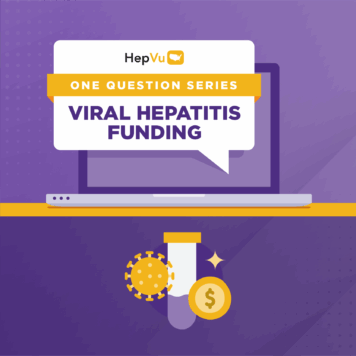Eric Hall, PhD, MPH, is an Assistant professor of epidemiology in the Oregon Health and Science University-Portland State University (OHSU-PSU) School of Public Health.
Q: Your research has primarily focused on the ways viral hepatitis prevalence in the U.S. has been exacerbated by the opioid epidemic. What first interested in you in this area of public health research?
The opioid and drug overdose epidemics have had a tremendous impact on our country and I think it’s one of the major public health challenges of our time. One of the many consequences is the increase infectious disease transmission, particularly viral hepatitis. To put it simply, the opioid epidemic led to an increase in injection drug use, which is the most common risk factor for Hepatitis C infection. This is where my interest comes in; my background is in infectious disease epidemiology.
As a public health community, we have a lot of the tools that we need to eliminate Hepatitis B and Hepatitis C infection. We have effective vaccines against Hepatitis B, we have curative treatment for Hepatitis C, and we know how both are transmitted and how to prevent transmission. I think the challenge now is identifying the people that need these different prevention or treatment resources and ensuring equitable access to them.
Q: Your forthcoming paper, Estimated number of injection-involved overdose deaths in US States, 2000 – 2020, provides estimates of injection-involved overdose deaths on a state-by-state basis for the first time. What is injection-involved overdose mortality and why is it important we measure this now, at this point in the opioid epidemic?
Injection-involved overdose mortality is the estimated number of overdose deaths that occur among people who inject drugs. It’s important to note that we don’t necessarily know from looking at death records if injection was involved in any single individual overdose death, or if other methods of drug administration lead to an individual overdose. However, through this study, we’ve developed an estimation approach to determine what is the expected proportion of all overdose deaths that were among people who inject drugs.
From a viral hepatitis prevention perspective, this is of particular interest because it provides more information about trends in injection behavior. For example, if we are interested in preventing hepatitis C infections, it would be very valuable to understand trends, differences, or changes in injection behavior. However, this is very difficult to measure directly. Historically, researchers and public health professionals often look at trends in overdose deaths as a proxy for injection behavior. This methodology improves on that proxy to include some additional information about injection.
Q: Some of your previous research, such as “Describing the Changing Relationship between Opioid Prescribing Rates and Overdose Mortality: A Novel County-Level Metric,” focuses on the relationship between opioid prescriptions and overdose deaths. How does this new research build upon the findings in your previous work on opioids and mortality?
Generally, this body of research as a whole recognizes that the opioid and drug overdose epidemics are playing out differently across the country and evolving over time. Both studies, the previous paper that you mentioned and the study that we are talking about today, use national longitudinal data sets to characterize some of those changes over time to learn more about changes in injection behavior. The previous paper looked at the relationship between prescription opioid availability and overdose mortality. Generally, that paper found that when prescription opioid availability decreased, overdose mortality increased. This suggests that there was a shift away from prescription opioids to illicit opioids, which may be more likely to be injected.
This paper takes another approach to utilize treatment data with overdose deaths data to quantify how many of those overdose deaths were likely to be among persons who inject drugs. Both papers take unique scientific approaches to understand something about how injection related behavior might be changing in different parts of the country.
Q: Your analysis found that between 2010 and 2020, Kentucky, Massachusetts, Florida, Georgia, and Indiana had the highest percent increases in injection-involved overdose deaths. Kentucky, for instance, saw a 184% increase. How do you hope advocates, lawmakers, providers, and public health officials use these data in their work, especially in such heavily impacted states?
First, this work provides additional evidence that both the drug overdose mortality and other adverse outcomes related to injection drug use continue to impact other public health challenges across the country. These impacts need and deserve our attention as the public health community. As you mentioned, in many places, the rise in overdose deaths has been well documented, but in this paper, we demonstrate that a lot of that increase is due to injection-involved mortality and that increase differs by state.
There are a variety of reasons these differences could be occurring, and this particular study does not necessarily go into those. However, some of those reasons include potential differences in the drug supply, potential differences in the ongoing shift from prescription opioid mortality to injection-involved mortality, or potential geographic differences in access to different overdose prevention interventions, specifically among those who or for those who inject drugs.
Extending this work and looking at specific states to understand what is driving the changes in each state can help inform the different types of overdose prevention and intervention strategies that any state might want to implement. For example, if states are experiencing a particularly sharp increase in injection-involved overdose mortality, they should prioritize strategies that focus on injection harm relation such as naloxone access or supervised injection sites.
Q: Your analysis suggests that states with large increases in injection-involved overdose mortality should expand harm reduction services for people who use drugs. How can harm reduction services be leveraged to help us move closer toward the goals of eliminating Hepatitis C and Hepatitis B in the United States?
These harm reduction services and strategies are very important. They not only have tremendous public health benefit in terms of the prevention of overdoses and the prevention of overdose mortality, but they can also provide public health benefit through the prevention and treatment of infectious diseases. For example, a supervised injection site that is able to provide clean injection equipment can help prevent HCV and HIV transmission for people that are using that site.
Additionally, if people who are injecting drugs are interacting with these harm reduction services, there are more opportunities for our public health programs to interact with them. This provides more opportunities to potentially screen and test individuals for infections and then link them to treatment or care when appropriate. Identifying and treating undiagnosed infections is not only beneficial for the individual’s health, but it can also prevent subsequent downstream transmission and infections.



